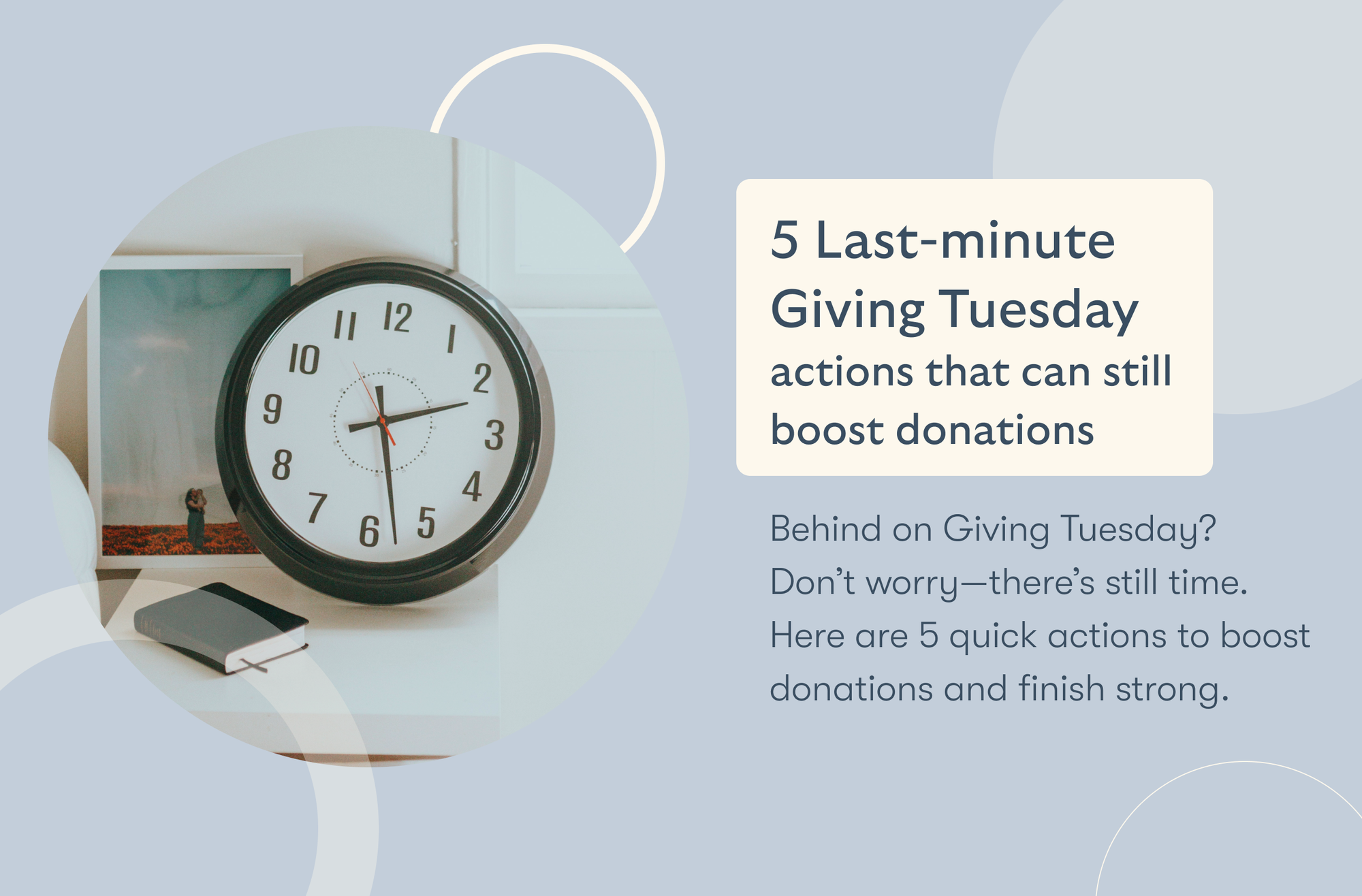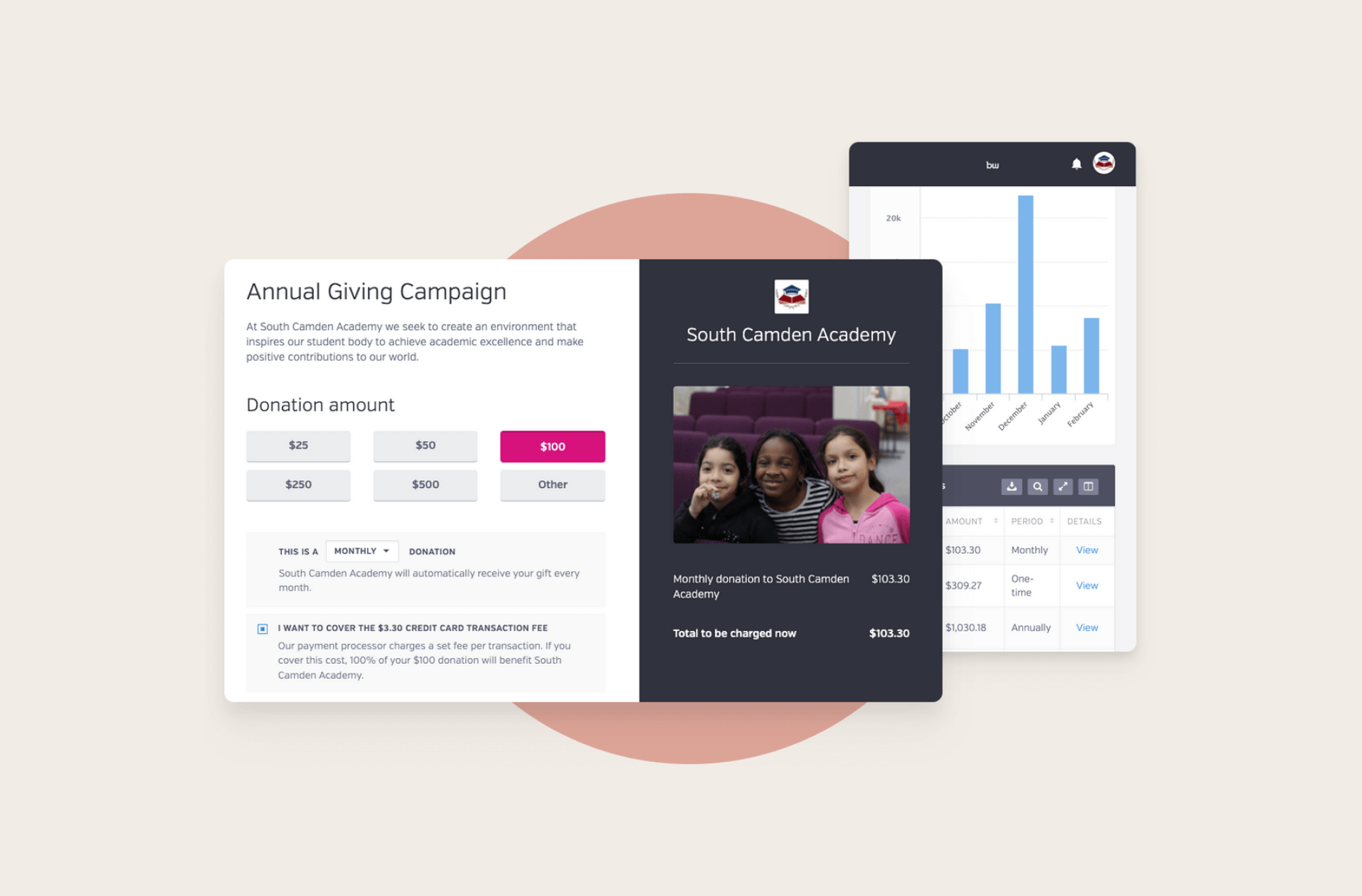Simplify donations with customizable default donation amounts
Streamline your processes and keep online and offline donations in one place
Engage with your donors with automatic updates
Give your donors the ability to donate once, monthly, or annually
Get Donations From Companies To Your Nonprofit In 8 Easy Steps
By Colin Hunter

Getting donations from companies can support your nonprofit's work and help you reach your goals. But how do you start? What steps should you follow to attract company donations?
In this blog, we'll walk you through a simple guide to help your nonprofit secure corporate support. Let’s get started and learn how to build fruitful partnerships that can make a lasting impact.
Step 1: Identify Potential Corporate Donors
The first step in getting donations from companies is to identify potential donors for your nonprofit. You should use a combination of research strategies and tools to find companies that align with your mission and have a history of charitable giving.
Here are some practical steps to get you started.
- Use databases like DonorSearch to find businesses with a history of supporting similar causes. Look for companies that have demonstrated philanthropic values and might be interested in your mission.
- Use your current network to identify any connections within companies interested in your cause. Ask your board members, volunteers, and supporters if they have contacts in businesses that could be potential donors.
- Research companies that actively engage in corporate social responsibility (CSR). Many companies aim to support community initiatives that match their CSR goals.
- Social media platforms are invaluable for connecting with potential corporate sponsors. Use LinkedIn to research company profiles and key decision-makers.
- Some companies offer matching gift programs, where they match the donations their employees make to charities. It can double the donations you receive and encourage more corporate involvement.
- Hosting or attending events where businesses are involved can provide opportunities to meet potential donors face-to-face. These interactions can help you understand their interests and establish a connection that might lead to future donations.
Each of these steps involves careful planning and research but can significantly improve your ability to secure corporate donations for your nonprofit.
Step 2: Build a Strong Online Presence
Your second stop should be to build a strong online presence that showcases the work your nonprofit does.
Your nonprofit can attract corporate attention and donations for your nonprofit by understanding which social media platforms your target audience uses most. It can include Facebook, Instagram, LinkedIn, or YouTube.
It's important to fully optimize your social media profiles by using engaging visuals and clear messaging that reflects your nonprofit's mission and goals. Include direct links so followers can easily donate, learn more, or get involved.
Your content strategy should focus on sharing stories that show the impact of your work. A mix of images, videos, and testimonials can help create an emotional connection with your followers. Use relevant hashtags and search engine optimization (SEO) on your social media posts to increase the visibility and discoverability of your content.
Get help from analytics tools to understand what connects with your audience and adjust your strategy accordingly.
In addition to a strong social media presence, having a professional website is vital. Your website should clearly communicate your mission, the impact of your work, and how people can help..
Step 3: Develop a Corporate Engagement Strategy
Developing a corporate engagement strategy involves creating appealing partnership packages and understanding the various types of support corporations can offer.
Here’s how you can build a successful engagement strategy for your nonprofit.
Create Appealing Partnership Packages
- Customize your partnership packages to meet the specific needs and goals of potential corporate partners. Consider what your nonprofit can offer in return, such as branding opportunities, access to events, or showcasing corporate social responsibility efforts.
- Clearly communicate the benefits of partnering with your nonprofit, such as improved public image, employee engagement opportunities, and the impact on the community.
Types of Corporate Support
- Cash Donations: Financial contributions are always needed and provide flexible funding for your projects.
- In-Kind Donations and Skills-Based Volunteerism: Corporations can offer goods, services, or expertise instead of cash.
- Cause Marketing: Partner with businesses in campaigns where they contribute a portion of their sales to your cause.
- Employee Engagement: Encourage corporate partners to involve their employees in peer-to-peer fundraising campaigns or volunteer projects.
- Matching Gifts: Use corporate matching gift programs where companies match the donations made by employees, doubling the potential fundraising impact.
Step 4: Craft Your Pitch
The next step is crafting a compelling pitch to corporate donors.
First, customize your message to the specific interests and CSR objectives of the corporation. Your pitch should ideally show that your nonprofit understands and supports the corporation's values and public commitments.
Include a clear and engaging story about your nonprofit's mission and the impact of your work. Highlight specific achievements and provide data that showcases the effectiveness of your programs.
It is important to clearly outline the benefits for the corporate donor. Detail how the partnership can benefit their brand, engage their employees, and reinforce their reputation for social responsibility. Emphasize the mutual benefits, showing how the partnership will positively affect both the community and the corporation.
Conclude your pitch with a strong call to action. Be specific about what you are asking for—whether it’s financial support, in-kind contributions, or other forms of engagement.
Make it easy for the corporation to act on your request by providing clear instructions or next steps.
Finally, customize your pitch for each potential donor to reflect their unique corporate culture and values. Practice delivering your pitch to ensure it comes across as natural and convincing.
Step 5: Present Your Proposal
It's important to engage effectively when presenting your proposal to corporate donors.
Focus on delivering your presentation with clarity and confidence. Whether in person or online, maintain a conversational tone and ensure your enthusiasm for the mission is evident.
Be concise but thorough in explaining how the corporate donor's support will be utilized and the impact it will have. Customize your language and examples to connect with the business's values and interests.
Interactive Elements
Include interactive elements into your presentation, such as Q&A sessions, live polls (if digital), or engaging workshops (if in person) to make the session more dynamic and encourage participation from the corporate team.
Effective Follow-Up Strategy
After the presentation, implement a structured follow-up strategy.
Start by sending a personalized thank you note within 24 hours, expressing appreciation for their time and reiterating key points that align with their CSR goals. Schedule a follow-up meeting or call to discuss the next steps, answer any pending questions, and keep the dialogue going.
Regular updates about your nonprofit’s activities and milestones can also keep the potential donor engaged and informed about the potential impact of their support.
Step 6: Use Corporate Volunteer Programs
A key statistic to remember is that 73% of employees wish their companies would do more to support social or environmental issues. So, it will be a good idea to add corporate volunteer programs to your list when planning to get donations from companies for your nonprofit.
Engaging Companies Through Employee Volunteer Programs
Corporate volunteer programs offer a structured way for businesses to support nonprofits through the dedicated efforts of their employees.
To effectively engage companies, present opportunities that allow their employees to contribute meaningfully, either through hands-on volunteer work or skills-based volunteering. Make the process easy and flexible. Allow for both individual and group activities that can be conducted during or outside of business hours.
Tools and CSR software can facilitate the management of these activities.
Benefits to Your Nonprofit and Corporate Donors
For your nonprofit, corporate volunteer programs can lead to an increase in manpower and resources, directly supporting your services and projects. They also create deeper community ties and can improve your visibility and credibility in the community.
For corporate donors, engaging in volunteerism increases employee morale and satisfaction, which are linked to higher retention rates. Companies often see improved public perception as they are viewed as responsible businesses committed to social causes.
Additionally, involving employees in volunteerism helps them develop new skills and a greater sense of company loyalty.
Want to raise more Donations? Try BetterWorld’s Donation Tool for FREE!
Step 7: Acknowledge and Thank Corporate Donors
The next step is all about acknowledging and thanking the companies.
Importance of Public Acknowledgment and Private Thanks
Publicly recognizing corporate donors can significantly benefit your nonprofit by showcasing the partnership and demonstrating the corporation's commitment to social responsibility. Your nonprofit can do it through its website, social media, or during public events.
Privately, personalized notes, emails, or phone calls ensure that donors feel valued on a more personal level. These gestures of thanks reinforce to donors that their contributions are making a real difference and that they are a valued part of your organization's community.
Importance of Thanking Even Without Donation
Expressing gratitude to corporate entities even when they do not donate can also be beneficial. It keeps the lines of communication open for future opportunities and demonstrates your nonprofit's commitment to building long-term relationships regardless of immediate benefits.
This approach can help build a positive reputation for your nonprofit and potentially lead to support in other forms, such as in-kind donations or volunteer engagements in the future.
Step 8: Create Long-Term Partnerships
Last, but not least, create a long-term relationship with the companies who are donating to your nonprofit. Here are some tips for achieving this:
1. Regular and Valuable Communication
Keep your corporate donors regularly informed about your nonprofit's activities and the impact of their contributions. Consistent communication not only keeps donors informed but also engaged, showing them how their support is making a difference.
2. Personalized Engagement
Understand the preferences of your corporate donors regarding how they wish to be communicated with and how often. Personalizing your interactions based on their preferences shows respect for their time and contribution.
3. Show Impact
It’s crucial to clearly demonstrate the impact of the donor's contributions. It can be through detailed impact reports that show what has been achieved with their help. Sharing success stories related to their funding can make the contributions feel more tangible and satisfying.
4. Transparent Reporting
Ensure transparency in how their donations are used. Build trust and show that your nonprofit is responsible and effective in managing its funds. Regular financial reports and updates on project progress can help in this regard.
5. Opportunities for Deeper Involvement
Invite them to engage with your nonprofit beyond just financial contributions. It could include participation in volunteer activities, board membership, or attending and speaking at events. Such involvement can deepen their connection to your cause and lead to more integrated partnerships.
6. Acknowledge and Appreciate
Regularly acknowledge their support publicly and privately. Public recognition can be through social media shoutouts or mentions in newsletters, while private appreciation could be expressed through personalized notes or calls.
7. Feedback and Adaptation
Seek their feedback on your initiatives and use it to improve your strategies. Show that you value their input and are committed to growing alongside them.
Use The Power Of Corporate Contributions
Donations from companies can open new doors for nonprofits, providing more than just financial help. These contributions can also bring invaluable manpower and resources that can significantly increase your impact.
While many nonprofits concentrate on individual donors, the potential of corporate donations often gets neglected. Remember, engaging with companies offers a pathway to diverse forms of support.
By following the steps outlined, your nonprofit can open up a sustainable channel of support. So, keep striving, keep engaging, and remember that every connection made is a step forward for your mission. Let's make it happen together!

Join 105,000+ amazing nonprofits, organizations, and fundraisers on BetterWorld

Let our FREE fundraising tools help you raise more funds with less effort








